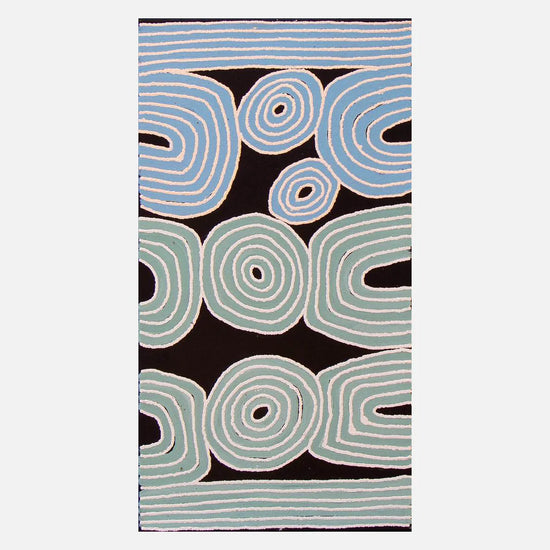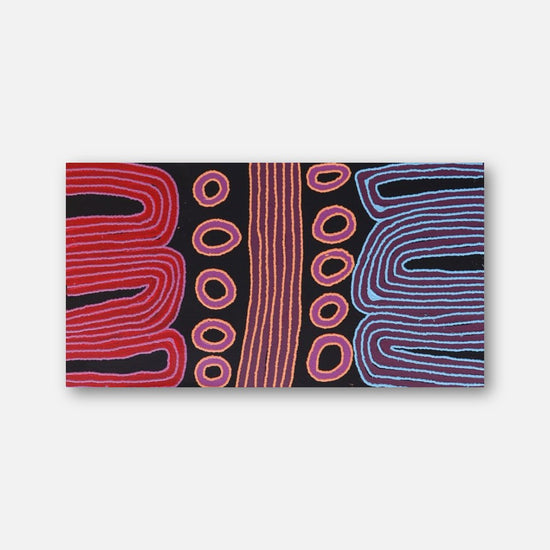Mary Gibson was born around 1950, bush way, at a site called Kuluwarri, deep in the Western Desert. As a child and teenager she lived at Kurlkurta, east of Kuluwarri and north-west of Tjukurla, with her large family: her father, four mothers, three brothers and five sisters.
She recalls that there was always so much to hunt and eat: tjala (honey ants), tinka (goanna), kampurampa (bush berries), kipara (bush turkey), nyaiia (wild cat), mangarta (quandong) and wangurnu (grain for bread).
Early life
In her late teenage years, Mary and her family walked to Papunya after hearing that many people had moved there. Two of her brothers remained behind at Kulkurta. In Papunya, Mary met and married her first husband, Mr Gibson. Together they had one daughter, Roma, and two sons, Bob Gibson and Roger Gibson.
With three young children, the family later returned to Kulkurta. Mary recalls many years travelling across the Western Desert, including regular trips to Tjarlirli Rockhole long before Tjukurla community was established. She also travelled to Kayilli (Patjarr) and later to Port Hedland, where her husband sadly passed away during a family holiday.
A mainstay at the Art Centre
Mary moved to Tjukurla when it was first established as an outstation from Docker River in 1989 and remembers the early building of what is now the Tjukurla community. She was among the first artists to paint at Tjarlirli Art when the art centre opened in 2006.
Today, Mary spends her time between Tjukurla and Docker River, remaining a central figure in both studios. She is an important cultural authority with an exceptional depth of knowledge of the Country she has travelled and lived on all her life.
“I paint the sandhills, hills, rocks and the two little rockholes there, not big ones, little ones.”
— Mary Gibson
She remains a fierce hunter – always the first out of the car on any bush trip, collecting bush foods or digging for tinka in their burrows.
Exhibitions, Awards and Features
- Minyma Mankurrpa (Three Women), Vivien Anderson Gallery, Naarm/Melbourne, 2025
- Desert Mob Exhibition 2024
- Bob and Mary - Vivien Anderson Gallery, 2022
- The Women's Show 2021–2024, Vivien Anderson Gallery, Naarm/Melbourne


